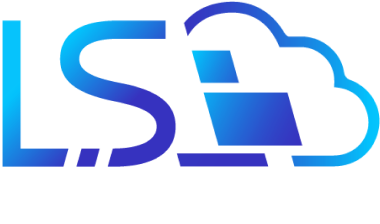
Demonstrating that you’ll be able to measure the return on investment, ROI, is an important part of getting the green light for your intranet project.
There are typically two major hurdles when attempting to measure the impacts of social business software: demanding stakeholders and intangible outputs. To grant project sponsorship, the shareholders need to see how you will measure return on investment. From the human perspective, we can easily understand the value of engagement, dialog, and innovation in the workplace, but it’s extremely difficult to translate these intangible items into dollars and cents.
Successful implementation of your company intranet requires taking stock of the current state of your business, defining an ultimate business goal, and then putting in place the mechanisms to measure the success and benefits of achieving those organizational goals.
The specific benefits experienced from a successful intranet and/or corporate portal deployment will range from hard to soft cost savings and include aspects such as improved employee retention, increased collaboration, healthy employee competition, a reduction in time-to-market and better provision of customer service.
But, we still come back to the essential part of proving there will be a positive ROI experienced from the investment of the company intranet cost. The business department understands the language of numbers much better, so it helps to start with creating an initial baseline of measurements that will be taken to define the criteria and measure actual change.
This allows for comparisons and will create the structure required to measure the real benefits versus the intranet cost over time. Some of these criteria and benefits include:
- Software Distribution: saves the IT department time, resources and money
- Online Publishing: reduces both print and distribution costs
- Online Contact Information & Directories: replaces repeated print and spreadsheet distribution
- HR Forms: online self-service replaces costly and time-consuming administration resources
- Time Tracking: online time card submission replaces traditional methods
- Email Storage: reduce costs related to server space, management, and maintenance of the Cloud system
- Content Management: database-driven intranet publishing reduces the time and resources required for online publishing.
As you can gather from the above features and benefits of our company intranet solution, there is no black and white method of determining the ROI. But, with properly gauging where you’re spending now, and monitoring the change, it’s possible to generate some solid numbers to determine what you’re getting out of your investment.
To determine the approximate ROI, both potential and existing, you must start with identifying the key areas where there are opportunities for cost savings. Data from these areas will then be applied to conservatively agreed-upon targets and benchmark examples, which will allow you to determine the approximate ROI value of the site/portal project.
It’s important that you continue to monitor the intranet ROI as time goes on, in order to ensure it continues to deliver measurable results, both from a financial and organizational standpoint.
Lack of measuring the value may result in failing the needs and demands of management, employees, and customers. It’s impossible to truly understand the value of an investment if it’s not being tracked.
For this reason, our analytics use five key measurements of social business ROI that are applied both at the business case stage and again when reviewing social business project success.
Hard Company Intranet ROI
Hard ROI refers to the classic Return On Investment that any business analyst would be familiar with. If you can invest $100 in something, and get a return of$1,000 within a reasonable timeframe, you’ve got hard ROI. For example, automating a process that used to be manual, or outsourcing a portion of company operations can result in seeing Hard ROI.
There are three major things that make Hard ROI unique, and the preferred choice of finance departments everywhere:
- It is quantified in dollars and cents, or the currency of choice.
- There is a direct cause and effect relationship between the investment and the return experienced.
- The benefits are physically realized, meaning that new money must appear in a bank statement, or costs must actually disappear from the balance sheet.
The difficulty in using this method to calculate the experienced benefits from your company intranet lies in the fact that social intranets have diverse and far-reaching implications for your business. Social business benefits are often once or twice removed from the direct effort of the investment, which can make it hard to attribute and measure Hard ROI.
Intangible Social Intranet ROI
At the other end of the spectrum, there are several players in the social business space who strongly believe that social business simply can’t be quantified and is not a valuable discussion.

None of these intangible assets has a value that can be measured separately or independently. The value of these intangible assets derives from their ability to help the organization implement its strategy. Intangible assets, such as knowledge and technology, seldom have a direct and measurable impact on the typical financial outcomes we like to measure, such as increased revenues, lowered costs, and higher profits.
Essentially, investments in intangible assets affect financial outcomes through chains of cause-and-effect relationships. If this is the method you choose to use, then the accurate measure of social business initiatives should be progress rather than Hard ROI.
ROI of Solved Problems
What specific problems are you trying to solve with a company intranet? This method looks at creating measurements that are directly related to particular problems.
For example, maybe your office has multiple locations with cross-functional teams that have to work together on a regular basis. A social intranet can help reduce the communication expenses associated with multiple office locations and remove the necessity of relocation altogether.
Measuring reductions in travel and communications expenses can attach a hard number to your social intranet return on investment when you’ve started with measuring the costs of specific business practices you plan to change.
Implementing this type of ROI offers many options and potential benchmarks — for example:
- Improved sales processes = 10% increase in revenue
- Ease of access to information = 30% reduction in time spent searching for expertise
- Removing distance and time zone barriers = 20% reduction in travel and communication costs.
This approach looks at ROI from a completely different angle.
Instead of asking, “If we have this new application, what would we get back?” this approach asks, “If we changed this expensive business practice, what is that worth to us?”
KPI Lift ROI
The third method is looking at existing KPIs from your business and assessing how a social intranet could impact them. Your organization has selected key performance indicators because you truly believe these numbers will drive your business forward. These measurements are linked to your overall business strategy, and a social intranet is a useful tactic to help drive these numbers.

By connecting the new social intranet to your existing key performance indicators, you will make your C-Suite extremely happy and also have a simple, quantifiable way to measure intranet success.
Lagging ROI
Lagging ROI is a notion developed by web 2.0 blogger Aaron Kim. The cycle of a Lagging ROI program is as follows:
- Establish a social business innovation bucket of funds. This bucket will be used to fund several initiatives, which are treated as an investment portfolio. Some will succeed while some will be absolute failures, but ideally, the portfolio as a whole will succeed.
- Make it clear to funders that there will be failures.
- Report back regularly on the performance of the portfolio.
- Management will use this information to make future decisions on whether or not to continue with funding for the innovation bucket.
Understanding these ROI methodologies is often half the battle. The other half is to clearly define which approach will gain traction within your own organization.
While social business is a widely accepted best practice, many companies continue to struggle with understanding the experienced ROI. While the roots of social business ROI go back as far as 2004, there are now enough case studies to demonstrate how businesses can measure and determine the real ROI derived from implementing their own social business practices.
We at LS Intranet believe that every new innovation can improve your business success and are always open to new challenges to make your Digital Workplace most efficient and profitable.







Leave a Comments